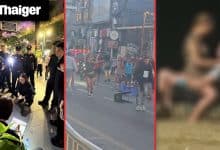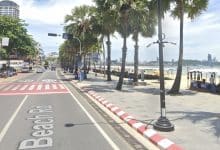Are you a digital nomad, or on the run?

I guess it is an age thing. As someone who left the parental home as soon as he could and headed for “as far away as possible,” I have serious misgivings about digital nomads.
Do they even know what a nomad is? Well, let me tell you…
A nomad has no “home” to “go back” to, or even to come from. They are, and let’s not split hairs here, nomadic.
The pandemic changed a lot, including the near extinction of these so-called nomads, who, at the slightest cough from the next table, slipped their Airbooks into their mega-huge, meta-tech backpacks, and headed for the room had only recently become “spare” in the parental semi, conveniently pre-stocked with everything they needed. These people are not, and never were, nomads of any description. They are tourists equipped with what Victorian teenagers used to call “modest private incomes,” gap-year kids with endlessly yawning gaps.
If you think “home” is a place of safety or even a place at all, you’re no nomad, just another tourist. With pretensions. Loads of them. And listicles to write. Loads of them too. And thanks for that, by the way. The world needs more listicles and more dropping jaws. How else will I find the world’s most dangerous dog breed?
Curmudgeonly I try to recall the last time I went into a sweatshop PR agency for a coffee and started preparing listicles just for fun. I never have, so what are these office workers doing in the coffee shop?
I lean over to the young lady at the next table sipping (always with the sipping, journos? Is there no other way to drink?) a complex, unnamable concoction made from coffee… “Are you a nomad?”

Thailand launched a Long-Term Resident programme in September, meant for four categories of foreign applicants including “Work-from-Thailand Professionals,” the nomads. Applying for a visa from inside the country will set you back around US$1,300.
It is hard to understand how Thailand came up with their absurd rules for the new visa, but it is quite clear that virtual nomads are not included. Whoever came up with the rules – presumably tasked with coming up with a “digital nomad” visa – obviously did not understand the job they were being asked to do.
To qualify, remote workers need to have had an annual income of at least US$80,000 for two years before application. If this income comes from anything other than a conventional job, it will be costly and difficult to prove. Applicants must be employed by a company that is publicly listed on a stock exchange, or if employed by a private enterprise, it must have combined revenue of at least US$150 million in the three years before the visa application. Prove that, mofo!
And that is not all, you’ll need a minimum of five years working in “relevant fields of the current employment,” whatever that means. If applicants do not meet these criteria, they must have at least a master’s degree, intellectual property, or in the case of business owners, have received Series A funding.
In Thailand, a digital nomad is someone (a man, of course) who has, after a minimum of two years at a Fortune 500 company, finally got sick of their real (highly-paid) job in an aluminium building on the outskirts of town and decided to make a new life in Patong.
Latest Thailand News
Follow The Thaiger on Google News:


























